Table of Contents
TogglePython has emerged as the de facto programming language for Machine Learning and compelling reasons and as a result, Python Certifications are focusing on a wide spectrum of its utility. The language’s innate simplicity and readability set it apart, providing developers with a streamlined coding experience. This simplicity facilitates faster development and empowers developers to focus on the intricacies of Machine Learning algorithms rather than get lost in labyrinthine code structures. So, in this blog, we’ll discuss what in-demand skills for Python Developers are abundant in the job market.
What Python is needed for Machine Learning?
These Python libraries empower machine learning developers to implement, experiment with, and optimize various algorithms and models efficiently. By leveraging these tools, organizations can navigate the intricacies of machine learning with precision and innovation, laying the foundation for impactful data-driven insights and applications.
Here, we delve into a selection of pivotal Python libraries that are indispensable for any Machine-Learning enthusiast:
1. TensorFlow
- Developed by Google, TensorFlow is a cornerstone in deep learning.
- Allows for the creation and training of intricate neural network architectures.
- Widely utilized for applications such as image recognition, natural language processing, and more.
2. PyTorch
- Favored for its dynamic computational graph, PyTorch excels in flexibility.
- Enables seamless model training and experimentation.
- Gaining popularity for its simplicity and close alignment with Pythonic principles.
3. Scikit-learn
- An all-encompassing library for classical machine learning algorithms.
- Provides tools for data preprocessing, feature selection, and model evaluation.
- Ideal for implementing algorithms like decision trees, support vector machines, and clustering methods.
4. NumPy
- Fundamental for numerical operations and efficient array manipulation.
- Forms the backbone for many other scientific computing libraries.
- Essential for handling large datasets and mathematical operations integral to machine learning.
5. Pandas
- A versatile library for data manipulation and analysis.
- Introduces data structures like DataFrames, simplifying the handling of structured data.
- Facilitates tasks such as data cleaning, transformation, and exploration.
6. Matplotlib and Seaborn
- Matplotlib is a comprehensive plotting library for creating static, animated, and interactive visualizations.
- Seaborn, built on top of Matplotlib, specializes in statistical data visualization.
- Essential for gaining insights into data distributions, relationships, and trends.
7. Keras
- An abstraction layer that simplifies the use of deep learning libraries like TensorFlow and Theano.
- Streamlines the construction and training of neural networks.
- Enables rapid prototyping and experimentation.
8. SciPy
- Built on NumPy, SciPy extends its capabilities for scientific and technical computing.
- Includes modules for optimization, signal and image processing, and statistical operations.
- A valuable resource for diverse scientific applications in machine learning.
Python Skills for Machine Learning Developers
1. Deep Learning
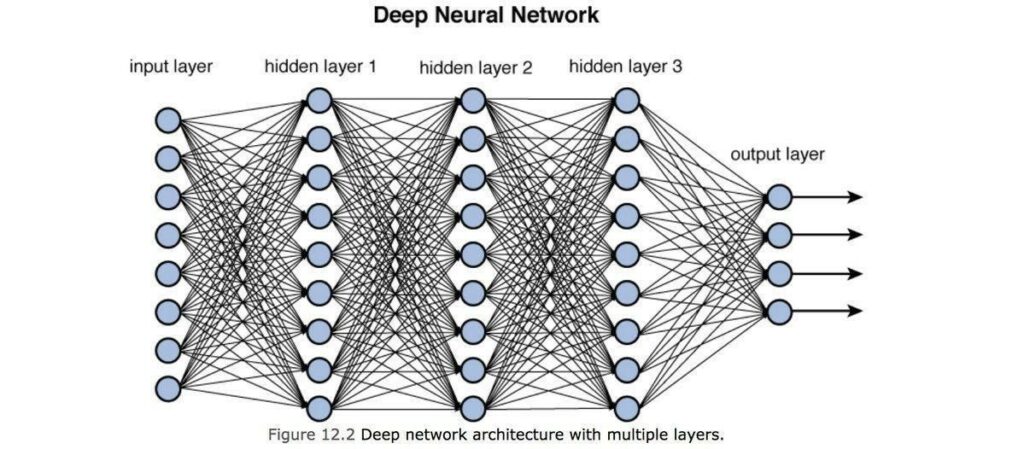
Image source: towardsdatascience.com
Becoming a deep learning expert with TensorFlow and PyTorch requires a systematic approach, combining theoretical knowledge with practical experience. Every programmer must have a thorough understanding of neural networks, activation functions, backpropagation, and optimization algorithms.
Along with that, they must be well-versed in concepts like convolutional neural networks (CNNs), recurrent neural networks (RNNs), and attention mechanisms. Acquire a comprehensive understanding of TensorFlow’s architecture, tensors, and computation graph, and adeptly utilize its high-level APIs, including Keras, for expeditious model prototyping. In the realm of PyTorch, grasp the intricacies of its dynamic computational graph and tensor operations, and delve into the framework’s modules designed for constructing and training neural networks.
2. Data Processing and Cleaning
Python offers a robust ecosystem of libraries for data processing and cleaning in machine learning. Programmers commonly use the following libraries, each serving specific purposes and offering unique functionalities:
3. Pandas
Pandas is a versatile data manipulation library that provides data structures like DataFrames, facilitating easy indexing, slicing, and manipulation of datasets. It is widely used for loading, cleaning, and transforming data due to its intuitive API and powerful functions.
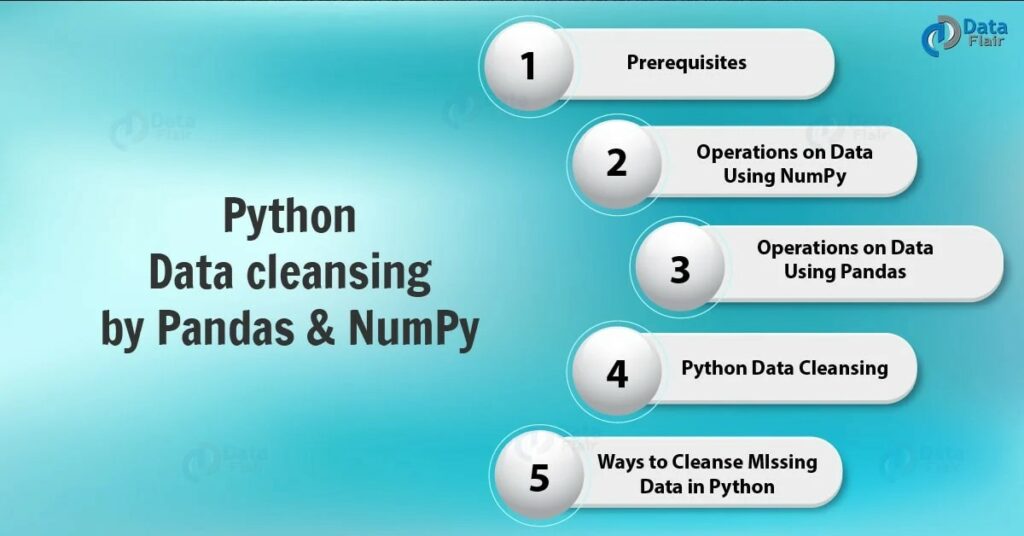
Image source: data-flair.training
4. Scikit-learn
It is a comprehensive Machine-Learning library, but it also includes utilities for data preprocessing. It provides functions for handling missing values, scaling features, encoding categorical variables, and more. Scikit-learn integrates seamlessly into the machine learning workflow, making it a go-to choice for many practitioners.
5. NLTK (Natural Language Toolkit) and SpaCy
These libraries are specifically designed for natural language processing (NLP) tasks. NLTK provides tools for tasks like tokenization and stemming, while SpaCy excels in efficient tokenization, lemmatization, and part-of-speech tagging. They are crucial for cleaning and preprocessing textual data.
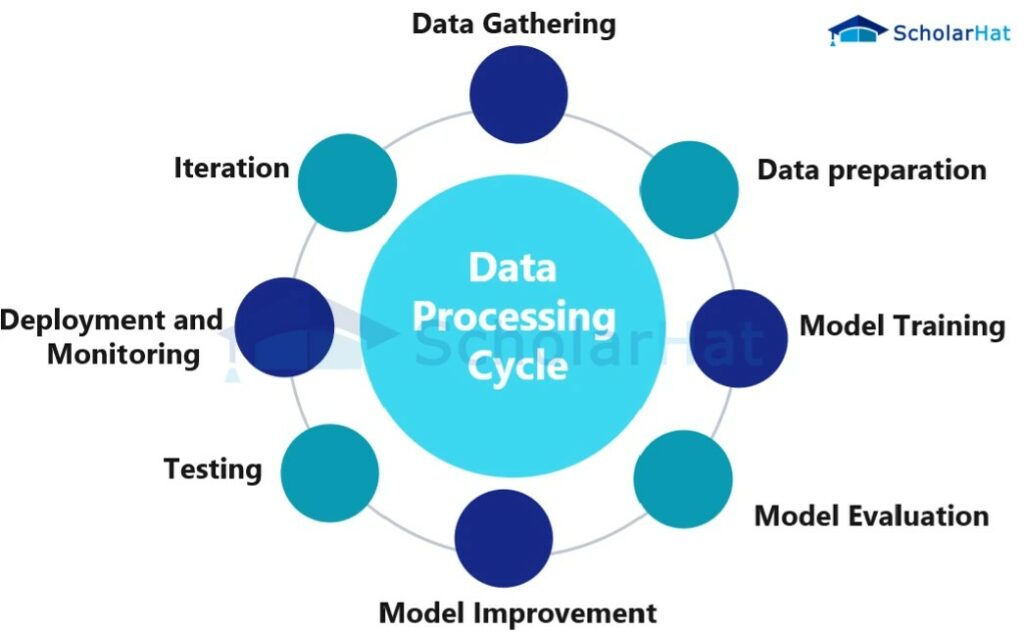
Image source: scholarhat.com
6. Matplotlib and Seaborn
These libraries are essential for data visualization. Matplotlib provides a flexible plotting interface, while Seaborn builds on top of Matplotlib and offers a high-level interface for statistical graphics. Visualizing data helps programmers understand distributions, patterns, and relationships between variables.
7. Feature Engineering
Python programmers leverage feature engineering as a crucial step in the machine learning workflow to enhance model performance by creating new features, transforming existing ones, and extracting valuable information from raw data. Feature engineering involves selecting, modifying, or creating features to improve a model’s ability to capture patterns and make accurate predictions. Here’s how Python programmers are leveraging feature engineering in machine learning:
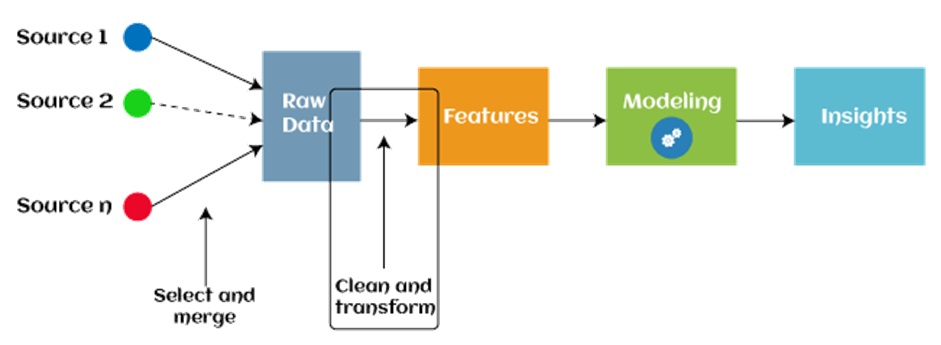
Image source: javatpoint.com
8. Domain Knowledge Integration
- Why: Incorporate expert knowledge to identify impactful features.
- How: Collaborate with domain experts to engineer features aligned with the business context.
10. Handling Categorical Variables
- Why: Transform categorical variables into numerical format.
- How: Use techniques like one-hot encoding or label encoding.
11. Creating Interaction Terms
- Why: Capture relationships between features.
- How: Multiply, divide, or apply operations on existing features.
12. Polynomial Features
- Why: Capture non-linear relationships.
- How: Use libraries like Scikit-learn for polynomial feature creation.
13. Handling Time and Date Components
- Why: Extract meaningful temporal information.
- How: Extract the day of the week, month, or hour from timestamps.
14. Scaling and Normalization
- Why: Ensure features are on a similar scale.
- How: Use Min-Max scaling or standardization.
15. Handling Missing Values
- Why: Address missing data for model performance.
- How: Create binary features indicating the presence of missing values.
16. Binning and Discretization
- Why: Simplify relationships, and reduce the impact of outliers.
- How: Categorize numerical data into intervals or discrete groups.
17. Text Feature Engineering
- Why: Extract meaningful information from the text.
- How: Tokenization, stemming, or TF-IDF for text transformation.
18. Aggregations and Grouping
- Why: Reveal patterns at different levels of granularity.
- How: Use group-by operations for calculating statistics.
19. Feature Scaling for Distance-Based Models
- Why: Scale features for distance-based algorithms.
- How: Ensure fair consideration in distance calculations.
20. Target Encoding
- Why: Capture the relationship between categorical features and target.
- How: Encode with mean or other statistics of the target variable for each category.
21. Model Deployment and Integration
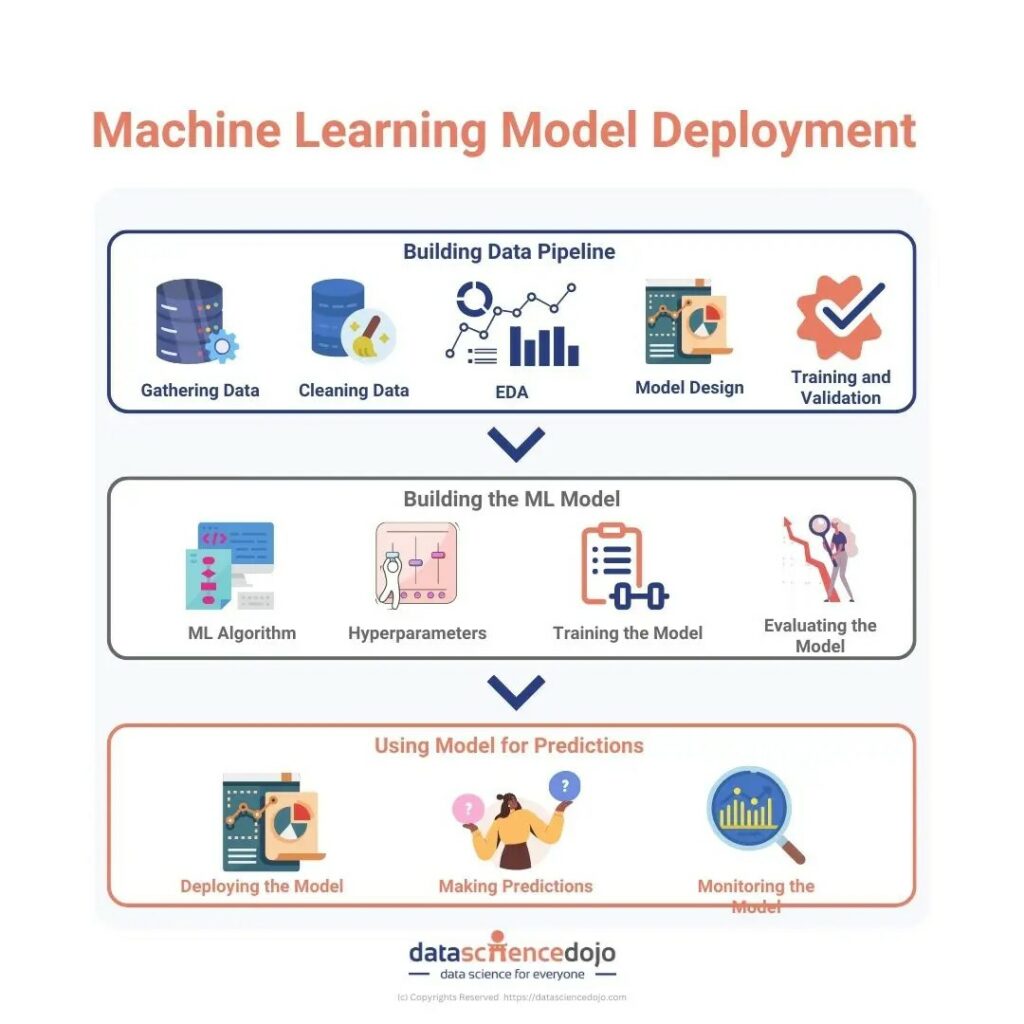
Image source: datasciencedojo.com
Model deployment and integration in machine learning using Python involves selecting a deployment platform, containerizing the model, creating API endpoints with web frameworks like Flask or Django, ensuring scalability, implementing monitoring and logging, incorporating security measures, utilizing CI/CD pipelines for automation, maintaining version control, seamlessly integrating with existing systems, conducting thorough testing, and providing comprehensive documentation. These practices ensure a smooth transition from model development to real-world applications, enabling Python developers to deploy and integrate machine learning models effectively for practical, impactful solutions.
22. Optimization Techniques
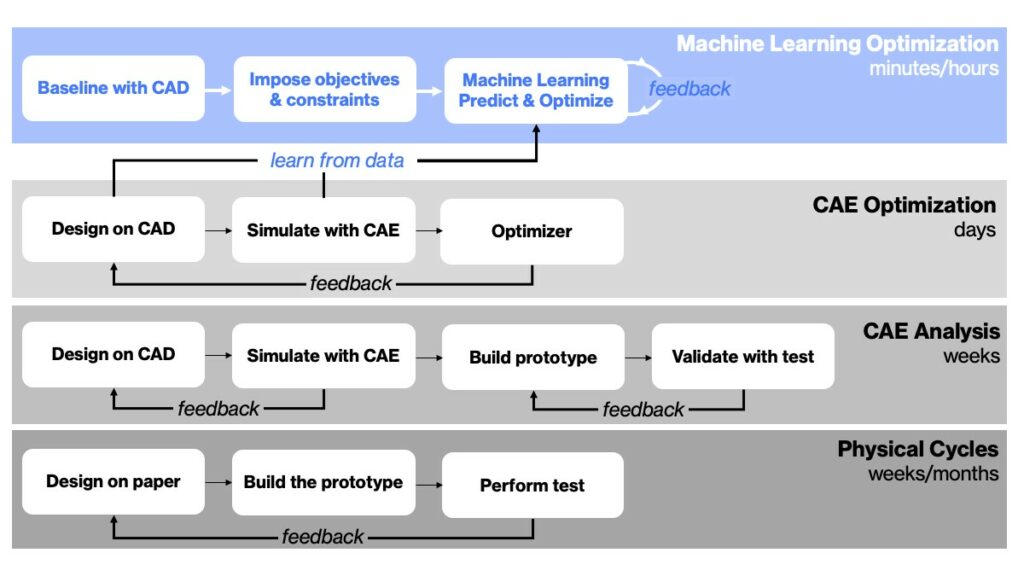
Image source: neuralconcept.com
Python Machine Learning developers employ various optimization techniques to enhance the efficiency, speed, and performance of their models. Here’s a concise overview of key optimization techniques:
23. Vectorization
- Objective: Leverage NumPy’s vectorized operations to perform mathematical operations on entire arrays, optimizing computation speed.
- How: Replace explicit loops with vectorized operations, taking advantage of NumPy’s optimized C and Fortran libraries.
24. Parallelization
- Objective: Distribute computations across multiple processors or cores to accelerate training and inference.
- How: Utilize parallel computing libraries such as Dask or joblib, or explore frameworks like TensorFlow and PyTorch for automatic parallelization.
25. Algorithmic Optimization
- Objective: Choose or design algorithms that are optimized for specific tasks, reducing time complexity.
- How: Select algorithms with lower computational complexity or optimize existing algorithms for specific use cases.
26. GPU Acceleration
- Objective: Harness the parallel processing power of Graphics Processing Units (GPUs) to accelerate training.
- How: Use GPU-accelerated libraries like CuPy, TensorFlow, or PyTorch to perform computations on GPU devices.
27. Memory Management
- Objective: Optimize memory usage to handle larger datasets efficiently.
- How: Employ techniques such as data streaming, memory-mapped files, or generators to minimize memory footprint.
28. Feature Scaling
- Objective: Ensure numerical features are on a similar scale to prevent certain features from dominating the learning process.
- How: Use techniques like Min-Max scaling or standardization to normalize features.
29. Hyperparameter Tuning
- Objective: Find optimal hyperparameter values to improve model performance.
- How: Employ techniques like grid search or randomized search to explore hyperparameter space efficiently.
30. Model Quantization
- Objective: Reduce model size and increase inference speed by quantizing model weights.
- How: Apply quantization techniques to represent model parameters with fewer bits while maintaining acceptable performance.
31. Caching and Memoization
- Objective: Cache and reuse computed results to avoid redundant computations.
- How: Implement caching mechanisms using tools like functools.lru_cache or external caching libraries.
32. Data Pipeline Optimization
- Objective: Streamline data processing pipelines for efficient handling of large datasets.
- How: Utilize libraries like Dask or Apache Spark for distributed and parallelized data processing.
33. Asynchronous Programming
- Objective: Improve efficiency by allowing concurrent execution of tasks.
- How: Implement asynchronous programming using libraries like asyncio to handle concurrent operations.
34. Pruning Techniques
- Objective: Reduce model complexity by eliminating unnecessary parameters or features.
- How: Apply pruning techniques to eliminate redundant connections in neural networks or features in traditional machine learning models.
Benefits of using Python in Machine Learning
Let’s elucidate the manifold advantages that Python brings to the table:
1. Simplicity and Readability
Python’s clean and concise syntax facilitates rapid development and enhances code readability. This simplicity accelerates the learning curve for developers, enabling them to focus on the intricacies of machine learning algorithms rather than grappling with convoluted code.
2. Vast Library Ecosystem
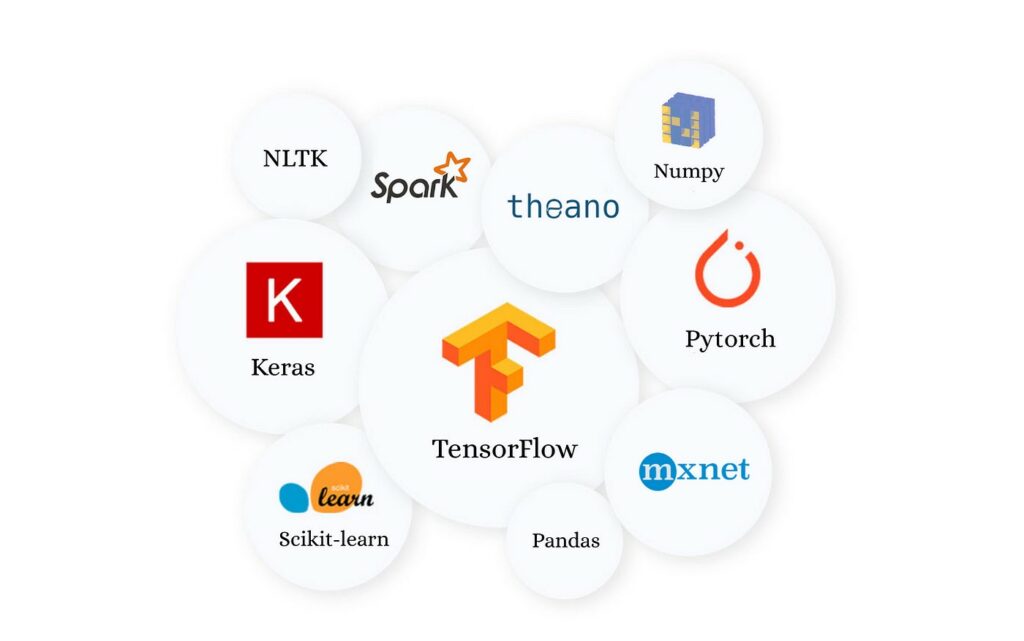
Image source: towardsdatascience.com
Python boasts a rich ecosystem of libraries, such as TensorFlow, PyTorch, and scikit-learn, that serve as the bedrock for machine learning development. These libraries provide pre-built functions and modules, expediting the implementation of complex algorithms and reducing development time.
3. Community Support
The expansive and vibrant Python community ensures a wealth of resources and collaborative support. Developers can tap into forums, online communities, and documentation to troubleshoot challenges, share insights, and stay abreast of the latest industry trends.
4. Integration Capabilities
Python seamlessly integrates with other languages and technologies, fostering interoperability across diverse platforms. This facilitates the incorporation of machine learning models into existing systems and ensures a cohesive development environment.
5. Scalability and Performance
With the advent of tools like NumPy and Pandas, Python has evolved to deliver high-performance computing capabilities. Developers can harness the power of parallel processing and distributed computing to scale their Machine-Learning applications efficiently.
6. Robust Frameworks
Frameworks like Django and Flask empower developers to build robust, scalable, and maintainable Machine Learning applications. These frameworks streamline the deployment and management of machine learning models, enhancing overall project efficiency.
Conclusion
Python stands as a preeminent language in the realm of Machine Learning, offering a versatile and powerful environment for developers. Its extensive libraries, readability, and simplicity expedite development, while the active community support ensures continuous improvement and knowledge sharing. Thus, every esteemed Machine Learning Certification requires knowledge of Python. With a gentle learning curve and dynamic typing, Python continues to be a driving force in fostering innovation and collaboration within the ever-evolving field of machine learning.

© 2022 spoclearn.com